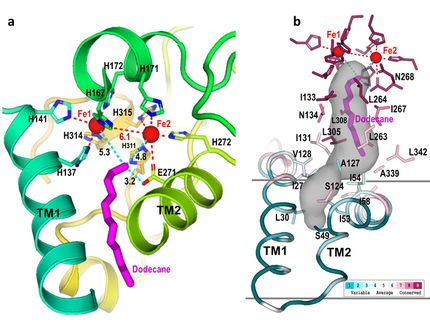Improved method developed to test carcinogen risk
Researchers at Oregon State University recently completed the largest animal study ever done in the field of toxicology, according to the university, and the findings challenge some basic concepts about how to determine what level of a cancer-causing compound can be considered safe.
The study found that acceptable levels of at least one carcinogen may be 500 to 1,500 times higher than is currently believed. It also indicates that for many purposes trout may be a superior animal model than laboratory rats, and that traditional methods of assessing the risk of carcinogens need to be re-evaluated.
The health impact of carcinogens is not always "linear," the OSU researchers reported in this study. This means experiments that are done using high concentrations of a carcinogen – a common practice made necessary by cost and logistics – may not accurately predict the actual risks of the compound when exposure in the real world is at lower levels over long time periods.
In practice, this suggests that some chemicals or toxins are safe at levels far higher than is currently believed, and that some previous research may have significantly erred on the side of conservatism. Such studies have been "severely limited by inadequate experimental data at environmentally relevant exposures," the researchers wrote in their report.
"The whole foundation of modern toxicology is that the dose makes the poison," said George Bailey, an OSU distinguished professor emeritus of molecular and environmental toxicology. "You can die from eating a few tablespoons of ordinary table salt at one time, but that doesn't mean that table salt is a poison at the doses that humans normally consume.
"With compounds that we know can cause cancer, the real question is how much is too much," Bailey said. "What we have found is that traditional approaches to making that evaluation, which are almost always based on studies done at very high doses with laboratory rodents, may not always give us answers that are reasonably accurate."
What has changed, the OSU researchers said, is the realization that rainbow trout may for many purposes be as or more accurate in determining what compounds, at what levels, can pose a risk of human cancer. OSU has pioneered the use of trout for studies of this type for 40 years, and it may now be time to greatly expand the use of that research, the scientists said.
"We can do experiments with trout in large numbers at very low cost, about 5 percent of what a rodent study would cost," Bailey said. "For most studies of carcinogens, exposing 2,000 rodents would be a huge project. For us, working with 2,000 trout is a pilot study."
The OSU scientists recently completed the largest study ever done with animals in toxicology, exposing 40,800 trout to what's considered an "ultra-low" dose of dibenzo-a,l-pyrene, a chemical that can cause liver cancer and is part of a broad field of toxic compounds called polycyclic aromatic hydrocarbons, or PAHs.
The study determined that a tolerable threshold for human exposure to this toxic chemical would be 500 to 1,500 times higher than is outlined by the Environmental Protection Agency. And in other work, which is still in preliminary stages, studies seem to be showing that previous studies about aflatoxins, another common carcinogen, are reasonably accurate.
"The EPA levels of exposure for both the PAH compound and aflatoxins were determined using essentially the same methodology based on rodent studies," Bailey said. "But our research suggests that the findings for aflatoxins are pretty accurate, while for the PAH compound we're off by a factor of about 1,000."
In addition, the OSU study determined that use of "biomarkers" such as DNA adducts to determine carcinogenic potential can also be flawed. That was a "huge surprise" and very significant, Bailey said, since much of the carcinogen research around the world is based on this.
Together, the findings suggest that past methodology to assess the danger of some of the most common carcinogens in the world may be questionable. They may, or may not, be accurate.























































